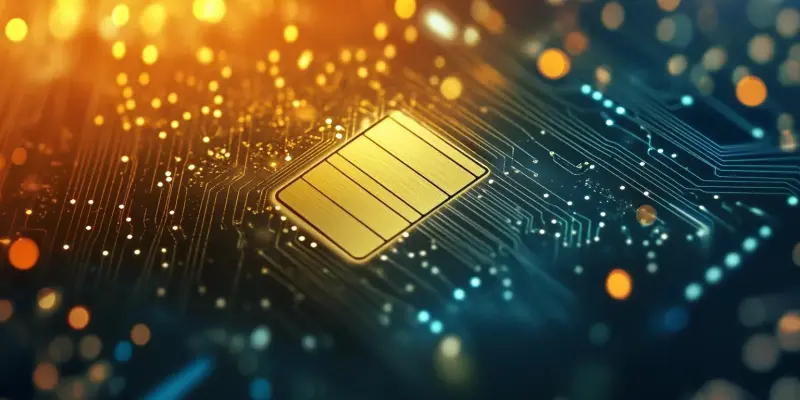The landscape of financial transactions is witnessing a monumental shift away from conventional cash transactions and even traditional chip-based card payments. This transformation is marked by the increasing adoption of contactless payments—a technology that promises faster, safer, and more convenient ways to pay for goods and services. This article delves into the reasons behind the unprecedented rise and widespread acceptance of contactless payments across the globe.
Defining Contactless Payments and Their Mechanism
How Contactless Payments Work
Contactless payments refer to transactions conducted by simply tapping a card, smartphone, or wearable device on a point-of-sale (POS) terminal, facilitated by Near Field Communication (NFC) or Radio Frequency Identification (RFID) technology. When a user taps their NFC-enabled card or device on a contactless reader, the reader processes the transaction securely via encrypted data transmission. Within seconds, the transaction is approved without needing a PIN entry in most cases.
Comparative Features of Contactless Payments
The speed of contactless transactions sets them apart as they are completed almost instantly, significantly reducing the time consumers spend at checkouts. Security remains one of the most compelling advantages of contactless payments. By leveraging advanced technologies such as tokenization and encryption, each contactless transaction generates a unique code to keep data secure. Convenience is another critical factor; contactless payments eliminate the need for PIN entry for smaller transactions, ensuring a swift and smooth experience. Contactless payments reduce the need for physical touch, making them a cleaner alternative to touching keypads or exchanging cash.
Exploring the Key Drivers Behind the Adoption of Contactless Payments
Speed and Convenience
Consumers appreciate the ability to make quick payments without the hassle of entering a PIN or fumbling with cash. The ease of use and speed mean that businesses can serve more customers in less time, potentially increasing revenues and improving customer service.
Enhanced Security and Fraud Protection
Contactless payments offer a higher level of security compared to traditional payment methods. This superior security is attributable to the leveraging of advanced technologies such as encryption and tokenization, and biometric authentication for mobile wallets. The combination of these security measures makes contactless payments an attractive option for consumers seeking both convenience and peace of mind.
Growing Adoption by Businesses and Consumers
Technological Advancements and Regulatory Backing
The rise of contactless payments is supported by technological advancements, regulatory backing, and evolving consumer expectations. Governments are also encouraging a shift towards a cashless economy, recognizing the benefits of digital transactions in reducing costs and improving financial transparency.
Seamless Integration with Mobile Wallets
Mobile wallets like Apple Pay, Google Pay, and Samsung Pay have revolutionized the payment landscape by integrating various payment methods into a singular digital platform. Secure storage for contactless payment information within smartphones ensures that sensitive data remains protected. Mobile wallets offer a combination of encryption and biometric authentication to safeguard transactions.
Contactless Payments in the Post-Pandemic World
Hygiene and Safety Concerns
The COVID-19 pandemic heightened the need for touch-free payment methods, reshaping consumer behaviors towards safer alternatives. The ability to offer contactless payment options has become a competitive advantage for businesses seeking to reassure customers about the safety of their operations.
Increased Financial Inclusion
Contactless payments have significantly impacted financial inclusion by providing banking and payment solutions to populations in regions with limited access to traditional banking services. This technology offers banking solutions via mobile wallets for unbanked individuals, providing them with a secure and convenient way to manage their finances.
Future Innovations in Contactless Payment Technology
Wearable Payments and Biometric Cards
Wearable payments involve the integration of tap-to-pay capabilities in smartwatches, rings, and bracelets, allowing consumers to make payments with just a tap of their wearable device. Biometric cards enhance authentication with fingerprint scanners embedded in the cards, offering an additional layer of security for contactless transactions.
Cryptocurrency Integration and Blockchain
The integration of contactless payment solutions with blockchain technology for cryptocurrency transactions represents another exciting frontier in the evolution of digital payments.
Key Takeaways
The landscape of financial transactions is undergoing a significant transformation, moving away from traditional cash and chip-based card payments. This shift is driven by the growing adoption of contactless payments—a technology that offers a faster, safer, and more convenient way to pay for goods and services. Furthermore, innovations in digital security have made contactless payments safer, protecting users from fraud and unauthorized transactions. The global acceptance of this technology is evident as more businesses and consumers opt for its ease and reliability. Consequently, contactless payments are becoming a standard practice, reflecting the changing preferences and technological advancements in the financial sector.

